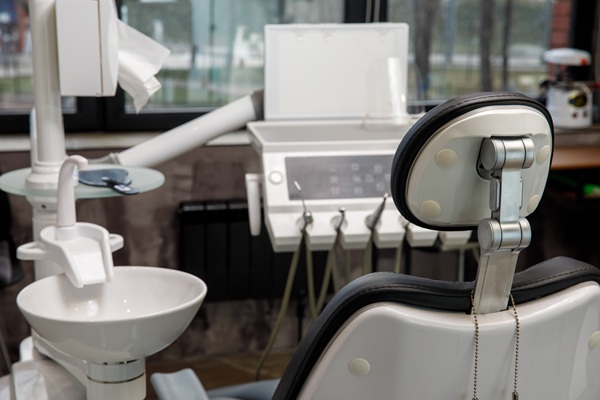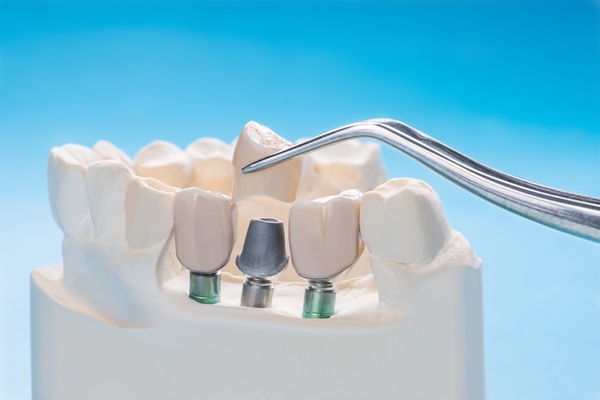Dental Botox for Frown Lines

Most people who have heard of Botox® correctly associate it with facial wrinkles and frowns. Generally occurring as creases in the skin between the eyebrows, frown lines often become more pronounced with age. These lines were given this name because they tend to appear when the eyebrow muscles are contracted in a frown. While everyone will eventually get these lines, some people have more distinct frown lines than others. They can sometimes appear quickly, and many persons do not appreciate this obvious sign of aging. Here is how dental Botox® can help conceal frown lines.
What is Botox®?
Introduced over 21 years ago, botulinum toxin A, commonly referred to as Botox®, has been used to reduce the appearance of facial wrinkles and frown lines for millions. A purified protein, this treatment was used in almost 2.5 million cosmetic procedures in 2008 alone, according to the American Society of Aesthetic Plastic Surgery. Of all cosmetic procedures done that year, 24% were Botox® treatments.
How it works
Botox® proteins attach to the nerve endings of muscles, prohibiting nerve transmission. It can take between two and ten days for the transmitters to become completely blocked and prevent muscle contractions. Once the treatment has taken effect, the involved muscles cannot contract and form facial wrinkles. This allows the skin to become smooth. The botulinum toxin A insertions are temporary and typically last for three to four months.
How it is administered
Botox® is injected with a needle into specific facial muscles. Because each person can require a different dosage amount, depending on factors like age, weight and number of previous treatments, it is important that the toxin is administered only by a trained professional. Many injectors are certified by the American Academy of Facial Esthetics or have a graduate degree in esthetics.
Why dental Botox®?
The frightening truth is that a person can become certified to administer these injections after completing a one-day course. A degree or advanced training of any kind is not required. This means it can be unwise to schedule a Botox® appointment with just anyone. That could lead to mistakes during treatment and disappointing results.
Many dentists use this medication frequently and therefore have experience with providing correct dosage and performing gentle injections. Esthetic dentistry cases can sometimes require using these treatments for patients with the following concerns:
- High lip lines
- Denture issues
- Lip augmentation
- Facial muscles that need retraining due to orthodontic procedures
Because some Botox® procedures can be done in as little as 15 minutes, it can be convenient to schedule an appointment at a dental office. Many patients choose to schedule an injection at the same time as a biannual dental checkup to save time.
Conclusion
When frown lines are a source of dissatisfaction, Botox® can help reduce them and cause the skin to appear more even. This therapy is extremely common and considered safe. Because the treatment requires proper dosage and a correct injection to be optimally effective, scheduling the procedure with an experienced dentist may help obtain a satisfying outcome.
Are you considering Botox in the Huntsville area? Get more information at https://www.yourhuntsvilledentist.com.
Check out what others are saying about our services on Yelp: Read our Yelp reviews.
Recent Posts
Understanding the key differences between a dentist and an orthodontist can help patients determine which specialist they need for their oral health care. While both professionals focus on maintaining and improving oral health, their roles, training, and areas of expertise differ significantly. A dentist typically handles general dental care, while an orthodontist specializes in diagnosing…
If the idea of getting dental implants intrigues you, it may be time to speak to your dentist about this treatment. You need sturdy teeth for good oral health, as well as to eat and smile normally. Implants not only improve your mouth’s function but will also look just like your natural teeth.While dental implants…
When it comes to oral care, any general dentist will tell you that details matter. While brushing and flossing are essential, you may be missing key steps that can significantly affect your dental health. Therefore, dentists emphasize the importance of consistent oral hygiene practices, proper techniques, and professional care to prevent common dental issues and…
A TMJ Dentist is a dental professional who helps diagnose and treat problems with the temporomandibular joint (TMJ), which connects the jaw to the skull. Issues with this joint can cause pain, stiffness, and discomfort in the jaw. They can also lead to headaches, earaches, and trouble chewing. Visiting a TMJ dentist is an important…


